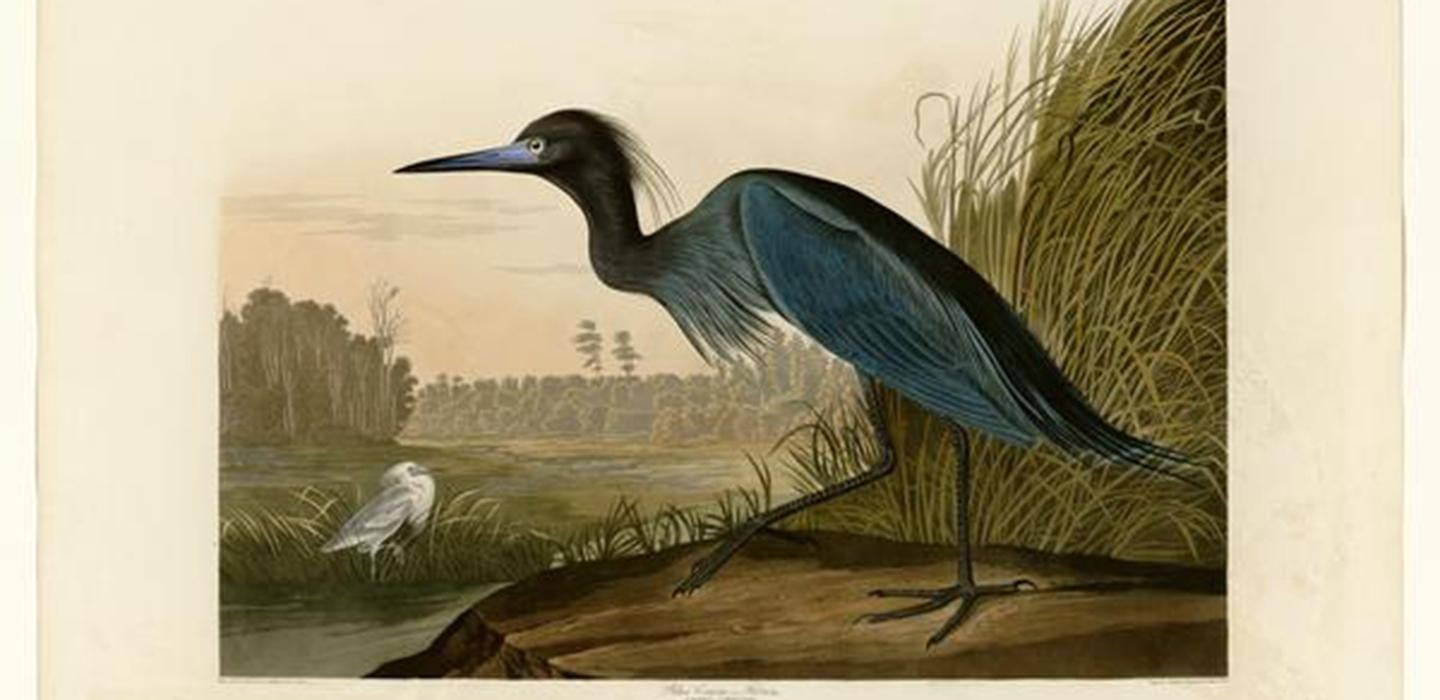
Subscribe to Pittwire Today
Get the most interesting and important stories from the University of Pittsburgh.National Audubon Day, held annually on April 26, honors the birth of John James Audubon, the French-American ornithologist, conservationist and painter of Birds of America, a collection of 435 hand-colored, life-size prints. Only 120 complete sets of the prints are known to exist — and the University of Pittsburgh has one of them.
Born in Haiti in 1785 and raised in France, Audubon immigrated to the United States in 1803, settling at his father’s farm outside of Philadelphia. While ornithology held his interest as a youth, his time in Pennsylvania is when he began studying and painting in earnest.
In an act that would make him a household name, Audubon eventually set the ambitious goal of painting every bird in North America (today the Audubon Society says that’s more than 2,000 species). His ambition didn’t match his output, but he did manage to complete realistic and often dramatic prints of nearly 500 bird species native to the east, gulf and Nova Scotia.
From 1827 to 1838, Audubon partnered with an engraver in London, where an assembly line of etchers and colorists recreated the images in reverse on a copper plate. The fine feathers of the black throated diver, the tufts of moss and lichen on the branch where the barred owl perches and the delicate shades of pink of the American flamingo were all painstakingly applied to the plates by hand, each color applied separately. They’re details you can’t miss when viewing Pitt’s digital archives.
“When we first made our Birds of America scans available online, we offered the ability to zoom in on a high-resolution image — that kind of up-close access wasn’t all that common at the time, but you will miss the fine details of these plates if you can’t do that,” said Ed Galloway, associate university librarian for archives and special collections.
“We were one of the first organizations to produce high-quality scans of Birds of America, ensuring that Audubon’s work is more accessible,” Galloway added.
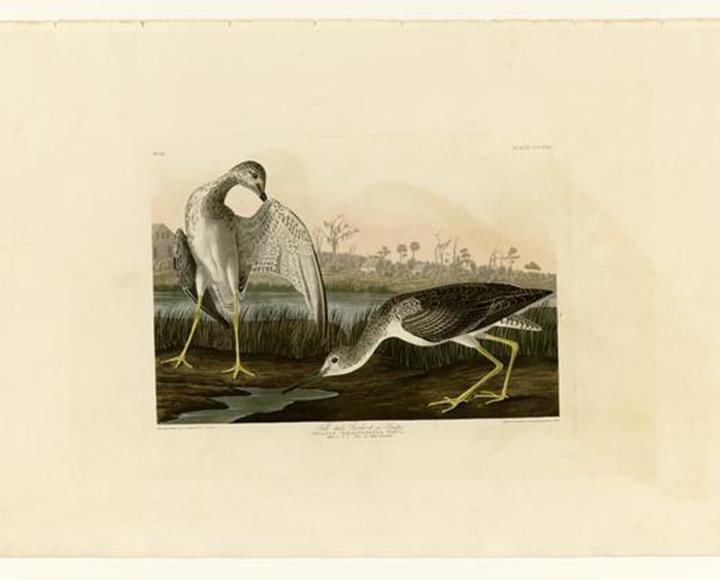
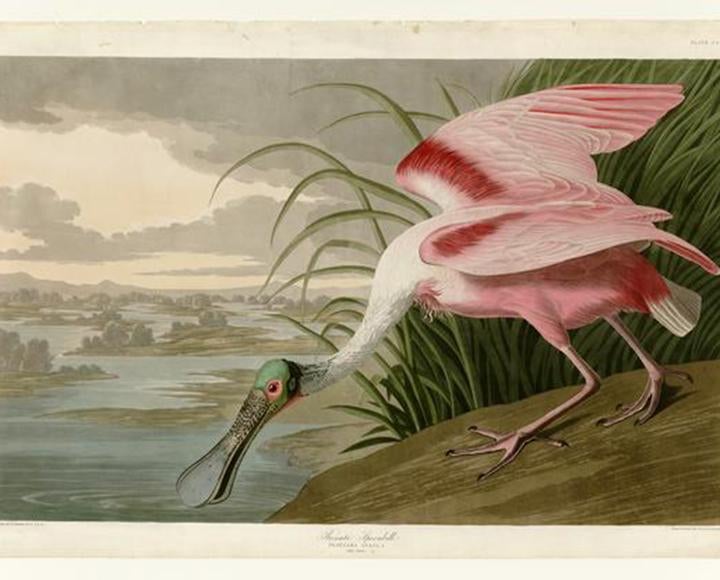
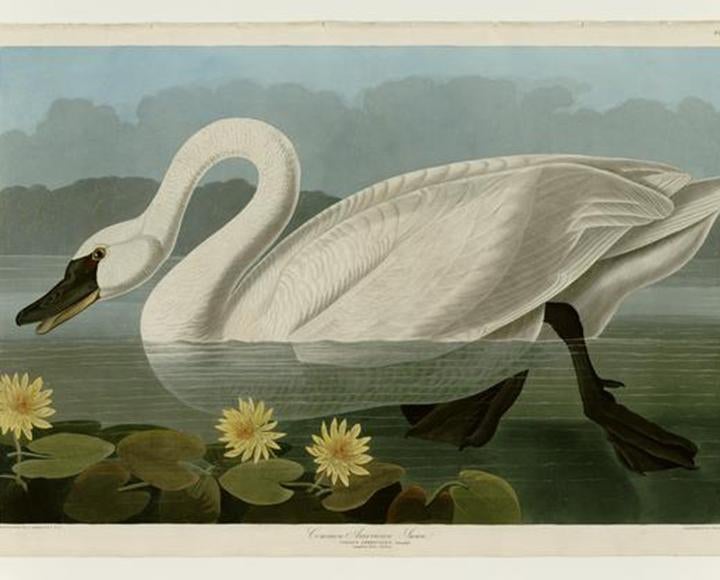
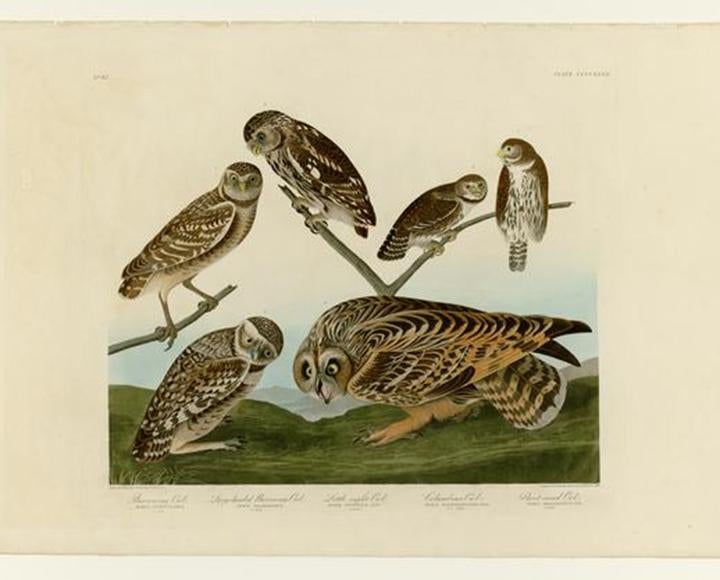
The University has been home to the Birds of America since the early 1900s, when it was donated as part of a larger bequest of manuscripts, books, maps and atlases by the daughters of William McCullough Darlington, a prominent Pittsburgh lawyer.
The prints were initially bound into a four-volume set weighing 50 pounds, but in the early aughts, Pitt librarians separated, restored and scanned the prints and launched a digital archive in 2008.
As the Pitt team scanned the images, they found a surprising residue: cigar ash. Audubon had created a subscription service to release his prints, and they became a status symbol of the rich.
“I imagine wealthy collectors showing them off at parties, a brandy in one hand and a cigar in the other,” Galloway said.
See scans of the entire collection online or, to see them in person, stop by the ground floor of the Hillman Library and the reading room of Pitt’s special collections and archives auxiliary building in North Point Breeze. Pitt also holds its own Audubon Day display in the fall to commemorate his arrival in Pennsylvania.
— Nichole Faina


